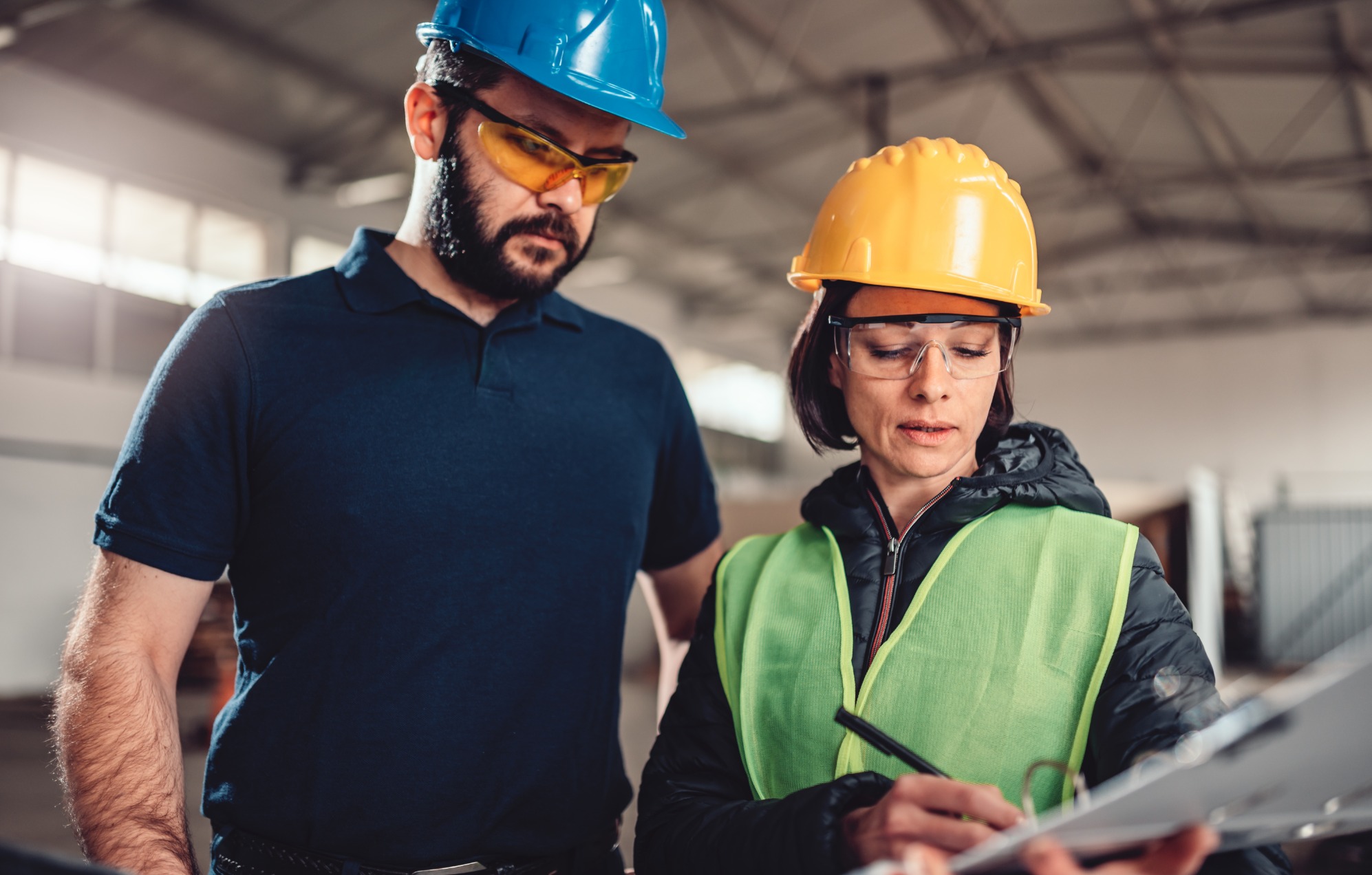Employers are more diligent than ever when it comes to health and safety in the construction industry. Even so, it remains one of the most dangerous for the individuals working on the front lines.
The Health and Safety Executive (HSE) estimates that a staggering 2,000,000 people in the UK suffer from the effects of injuries or illnesses sustained in the workplace (or exacerbated by conditions therein). The construction industry is the second biggest contributor to this statistic — worse still, it's responsible for the second highest mortality rate of any sector in the UK, according to an article published in The Independent in 2017.
It's not hard to see why. Working with heavy-duty machinery and hazardous materials is intrinsically more dangerous than sitting at a desk for eight hours.
Of course, there are a number of steps health and safety professionals can take to mitigate these risks. The problem is that, with so much to consider during the day-to-day running of a busy construction site, it's easy to overlook some of these hazards.
In this article, we highlight seven of the most significant.
7 Steps to a Safer Working Environment
1. Working at Height Safety Procedure
The Occupational Safety and Health Administration (OSHA) states that among the most common citations issued on construction sites are those related to scaffolding and ladders: working from height, in other words.
Lack of fall protection (safety harnesses, anchor points, netting) and/or written policy are two of the most frequent violations of standard health and safety procedure for contractors working at height. But a failure to provide regular training to employees or carry out routine inspections of safety gear is equally problematic.
If staff aren't trained to use safety equipment properly, their safety is going to be compromised; regardless of any protocols designed to protect them.
Employers must, therefore, go further than ensuring that anyone working at height is supported by adequate fall protection. They must also be equipped with the correct gear and a firm understanding of exactly how it should be used.
2. Handling Hazardous Materials and Chemicals
We all know that protective equipment must be worn when handling potentially hazardous materials. But that doesn’t mean the role of the employer begins and ends at the provision of said equipment.
Hazardous materials come in a variety of classes. In order to avoid preventable accidents, it's essential that employers understand the differences between them. The onus should always be on the employer to understand the risks first and foremost. However, workers also need easy access to detailed information concerning the material in question. Without it, the risk of dangerous spillages or injury is drastically increased.
Similarly, the employer is responsible for correctly labelling any surplus chemicals that might be stored on-site — complete with a comprehensive explanation of each chemical, how and where it should be used, and the expiration date.
3. Lockout/Tagout
Lockout/tagout is a safety procedure used in the construction industry that ensures machines are shutdown correctly when they’re not in use, at the end of the working day, or during periods of compulsory maintenance.
A lock is placed on the piece of equipment, tagged with the name of the person who last used it, that can only be opened using a specific key. It’s an important safety procedure that protects workers against accidental switch-on. It also adds a layer of accountability, should any piece of equipment develop a fault.
Yet, in an effort to increase speed or through sheer lack of appreciation for health and safety, workers often fall foul of lockout/tagout procedure. Because of this, the onus is on employers to make sure their lockout/tagout policies are effectively enforced, especially during busy periods.
4. Personal Protective Equipment (PPE)
From steel-toed boots and heavy-duty work gloves, to hard hats and hi-vis jackets, construction sites are overflowing with equipment designed to keep workers safe. So much so, wearing the appropriate gear is second nature to industry veterans.
However, technology and the regulations governing health and safety standards within the construction industry change all the time. Someone might feel well-protected and up to date with the latest training certificates, unaware regulations have recently changed.
Workers must take a certain degree of responsibility for their own safety. But, it’s ultimately up to the employer to make sure staff are trained, qualified, and conscious of the regulations surrounding the correct use of personal protective equipment.
5. Mental Health
More attention is being paid to mental health within the construction industry than at any other time. In part, this is due to the publication of various eye-opening statistics. The Institute for National Statistics, for example, reveals that males working in the industry are three times more likely to commit suicide than the average UK male; highlighting the serious psychological pressures placed on construction workers.
Long working hours and the physically demanding nature of the work are two of the biggest contributing factors. However, many cite the ubiquity of the ‘tough guy’ image as the single biggest issue. As such, those suffering with anxiety, depression, or any other psychological condition find it difficult to take the first step and seek the help they need, leaving many to suffer in silence.
Tackling such a widespread and ingrained attitude is difficult for employers. Fortunately, online tools can help them put employees in touch with the information and support they need. A centralised database or communications channel, such as a health and safety management dashboard, can be hugely beneficial.
6. Distractions
Coping with outside distractions is a common challenge across all industries. Smartphones are ubiquitous in modern society, giving everyone access to the internet, email, and social channels anywhere, at any time.
In an office environment, the most serious consequence of disruptive influences is a downturn in productivity. On the other hand, a corresponding loss of concentration on a building site can prove disastrous.
Like many of the previous entries on this list, much of the responsibility lays with the individual. That being said, the employer is accountable everyone under their duty of care from a legal perspective — each of whom could be at risk if, say, a forklift driver decides to check their Facebook updates or skip songs on Spotify whilst transporting goods from one part of the site to another. Employers simply can’t afford to be lax about workplace distractions.
Measures, such as banning the use of mobile phones during working hours, should be implemented to help keep distractions to a minimum — unpopular though they might be.
7. Temporary Workers
Last but by no means least, employers should always check temporary staff are familiar with all relevant health and safety procedures.
It can be dangerous to assume the health and safety standards implemented on your site are followed with similar assiduity elsewhere. As the old saying goes, it’s better to be safe than sorry; even if this means repeating lessons or information your new contractor has heard a thousand times before.
Equally important is ensuring temporary workers are properly integrated into the wider team and aren’t left feeling isolated. Miscommunication, because of a lack of unity, often leads to negative, potentially serious consequences. Besides, from a purely organisational perspective, cohesive teams often prove to be the most productive.
Keeping on Top of Health and Safety
Vital as these checks are, finding an effective way to distribute this valuable information is equally important.
Mobile has long since overtaken desktop as the preferred platform from which people access the internet, respond to emails, and organise their lives. For this reason, the best solutions are mobile, enabling health and safety to be managed on the go.
A consolidated, all-in-one platform, Safetybank gives you the tools you need to unify health and safety processes within your organisation. Book a free demo to learn more.
.png)




